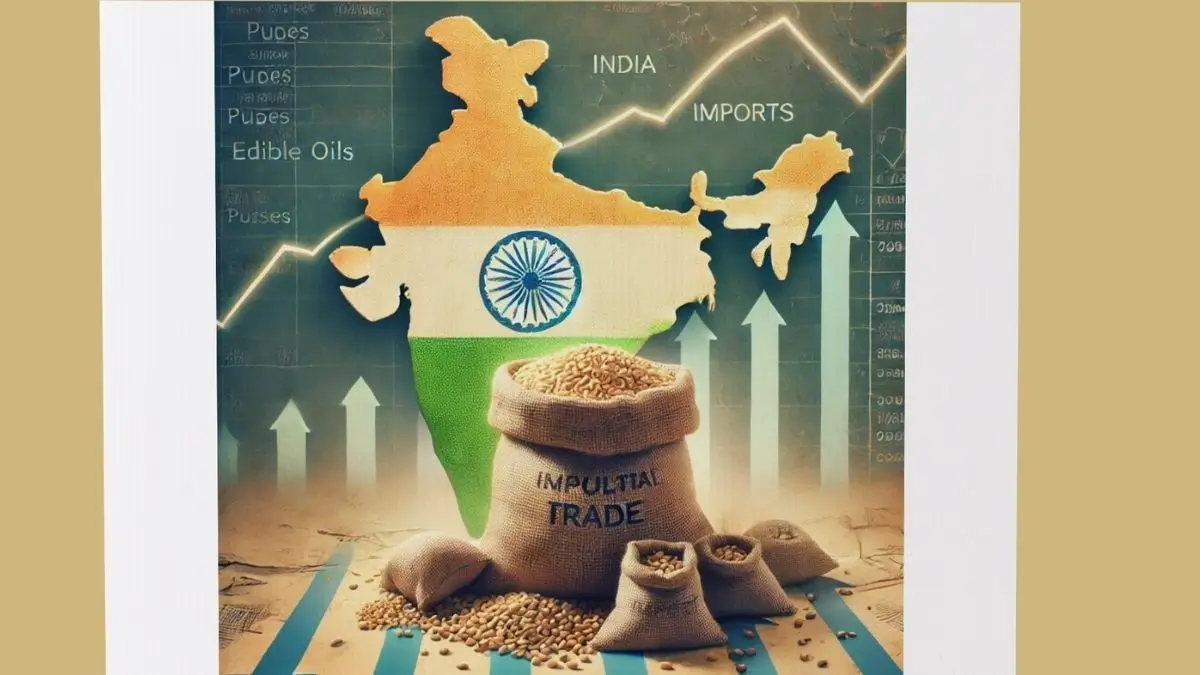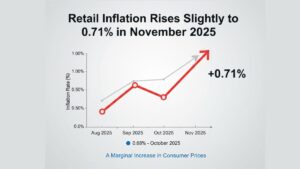India’s agricultural exports have witnessed steady growth, particularly in basmati rice, spices, coffee, and tobacco. However, the surge in imports—mainly of pulses and edible oils—has led to a significant reduction in the country’s agriculture trade surplus. This narrowing gap is influenced by multiple factors, including global commodity price trends, government restrictions, and production fluctuations.
Key Points
1. Agriculture Trade Surplus Trends
- India remains a net exporter of agricultural commodities, but the surplus has been shrinking.
- The trade surplus peaked at $27.7 billion in 2013-14, dropped to $8.1 billion in 2016-17, rebounded to $20.2 billion in 2020-21, and declined to $16 billion in 2023-24.
- For April-December 2024, the surplus fell to $8.2 billion, down from $10.6 billion in 2023-24.
2. Growth in Agricultural Exports
- Exports increased by 6.5%, reaching $37.5 billion (April-December 2024) compared to $35.2 billion in the previous year.
- The rise was higher than the 1.9% overall growth in India’s total merchandise exports.
- However, global price fluctuations and government restrictions on certain exports have impacted overall growth.
3. Declining Marine Product Exports
- Marine exports dropped from $8.1 billion in 2022-23 to $7.4 billion in 2023-24.
- The US, India’s largest seafood market, may impose new tariffs, further affecting exports.
4. Impact of Government Policies on Exports
- Sugar exports fell from $5.8 billion (2022-23) to $2.8 billion (2023-24) due to restrictions to control domestic inflation.
- Wheat exports have been negligible since 2023 due to food security concerns.
- Non-basmati rice exports continue, despite some bans and duties on certain varieties.
- Basmati rice, spices, coffee, and tobacco exports are expected to reach record highs in 2024-25, benefiting from supply issues in other countries.
5. Surge in Agricultural Imports
- India’s agricultural imports rose by 18.7%, from $24.6 billion to $29.3 billion (April-December 2024).
- Pulses imports surged due to poor domestic production, likely crossing $5 billion for the first time.
- Edible oil imports remain high, influenced by global price fluctuations due to the Ukraine war.
- India has become a net importer of cotton, with imports reaching $918.7 million (up 84.2%), while exports dropped to $575.7 million (down 8.1%).
- India also imports pepper and cardamom, despite being a top exporter of other spices like chilli, cumin, and turmeric.
| Summary/Static | Details |
| Why in the news? | Why India’s Agriculture Trade Surplus is Shrinking |
| Agriculture Trade Surplus Trends | Peaked at $27.7B (2013-14), fell to $8.1B (2016-17), rebounded to $20.2B (2020-21), declined to $16B (2023-24), and further dropped to $8.2B (April-Dec 2024). |
| Growth in Agricultural Exports | Exports grew by 6.5% ($37.5B in April-Dec 2024). Growth outpaced India’s total merchandise export growth (1.9%). Affected by global prices & government restrictions. |
| Declining Marine Product Exports | Fell from $8.1B (2022-23) to $7.4B (2023-24). Possible US tariffs may impact further. |
| Impact of Government Policies on Exports | Sugar exports dropped from $5.8B (2022-23) to $2.8B (2023-24). Wheat exports negligible since 2023. Non-basmati rice faces restrictions. Basmati rice, spices, coffee, and tobacco expected to reach record highs. |
| Surge in Agricultural Imports | Imports rose 18.7% ($24.6B to $29.3B in April-Dec 2024). Pulses imports may cross $5B. Edible oil imports remain high due to Ukraine war. Cotton imports surged 84.2% to $918.7M, exports dropped 8.1%. India also imports pepper & cardamom. |



 India’s Forex Reserves Rise by $1.68 Bil...
India’s Forex Reserves Rise by $1.68 Bil...
 India’s Net Direct Tax Collections Rise ...
India’s Net Direct Tax Collections Rise ...
 Retail Inflation Rises Slightly to 0.71%...
Retail Inflation Rises Slightly to 0.71%...







